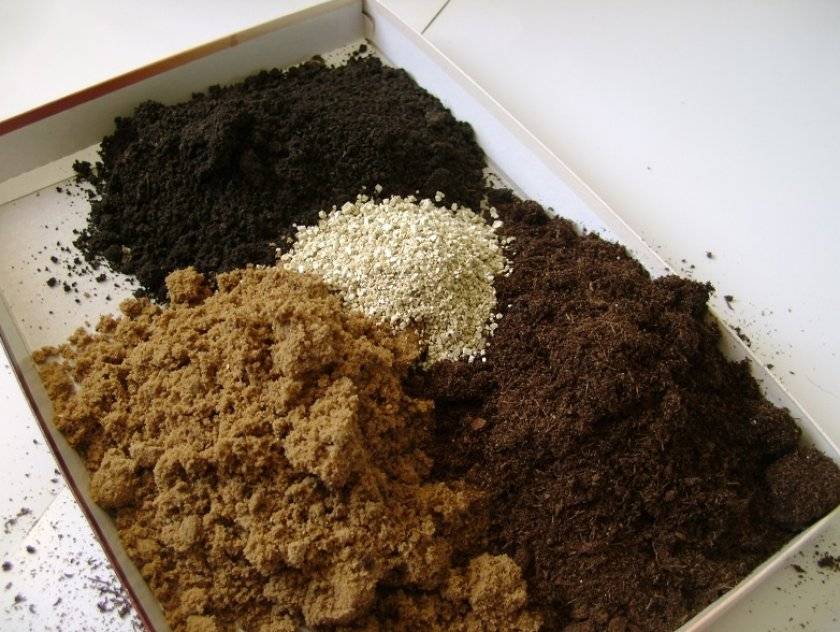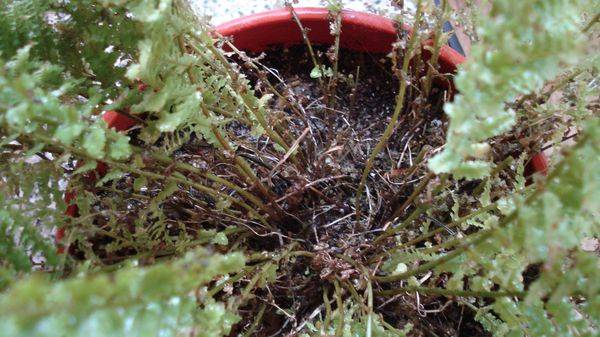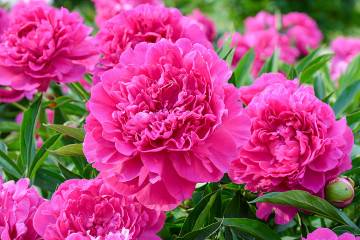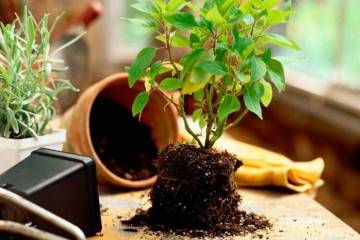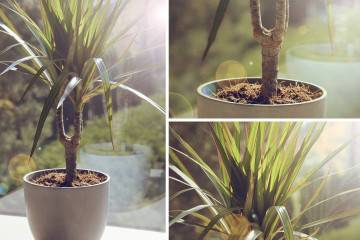How to transplant a fern - what kind of land and pot is needed
Content:
Indoor fern is considered a fairly common plant with which you can decorate the interior in offices, greenhouses, balconies and large rooms of a house / apartment. But when growing such a specimen, you must definitely know how to transplant a fern into a new pot, what the substrate should be for this, when to carry out the procedure. The flower is not too whimsical, so all the care measures are quite simple.
Indoor fern transplant
Like any other indoor flower, the fern requires periodic replanting. It is recommended to carry out this procedure at a suitable time and in accordance with all the rules. It is worth doing this for several reasons that significantly affect the condition of the plant.
Before proceeding with the procedure, it is worth preparing the necessary tools, a pot and a substrate. In the future, you will have to properly care for the transplanted specimen into a new container.
Why do it
A fern, which is considered an indoor fern, is transplanted every year. This procedure is necessary due to the rapid growth of the plant's root system. In addition, the soil itself is depleted as a result of the active growth of the aboveground part.
How to transplant indoor fern at home
The plant is not whimsical in terms of care, but the transplant must be carried out quite scrupulously. Such attention to this procedure is required due to the fact that flowerpots need to be changed very often in the first years of life.
Algorithm on how to plant a fern at home:
- Mix or prepare the purchased substrate.
- First you need to prepare the pot. Lay a 2 cm drainage layer at the bottom of the flowerpot. For this, you can use expanded clay, small pebbles or gravel.
- Pour a small layer of soil over the drain. Smooth the ground over the entire area of the flowerpot.
- A seedling is placed on top of the prepared soil layer. All the shoots of the root system must be carefully straightened.
- Gradually fill all the space between the root processes with earth, tamping it slightly.
- Cover the root with the rest of the soil and sprinkle with a little water at room temperature.
In order to carry out further watering without problems, it is necessary to leave 2 cm of free space from its edge in the process of filling the flowerpot with earth.
Fern transplant rules
In the process of transplanting, you can not only rejuvenate the plant, but also multiply it. There are several options as to how to plant a fern - dividing a bush, growing seedlings from a spore. The most relevant and successful is precisely the division of the bush.
Step-by-step algorithm for plant propagation by dividing the bush:
- Remove the plant from the pot.
- Find a hotel outlet with leaves that can be located near the root.
- Use a garden knife to separate the young sprout from the root portion of the mature plant.
Further landing is completely identical to the standard procedure. Unfortunately, young bushes often die, since rooting is rather slow and problematic.
When can you transplant a fern
In order not to harm the plant, you need to know when to transplant your garden or indoor fern. This is best done in the spring. If the procedure is carried out in the fall, then the plant may not have time to take root until the dormant period. Then the fern may die.
Plant preparation
In order to properly prepare, since transplanting an indoor or garden fern without stress is unlikely to work for it the first time, there will be broken branches, you need to know about all painless methods. The most optimal option for transplanting a room specimen is considered to be transshipment. You need to place the pot with the plant in a bowl of water and wait until the soil in the container is completely wet. Then pull the plant out of the old soil, inspect the root. If dead areas are present, then you need to completely wash off the soil from the roots and remove dry and rotten parts. If there are no such problems, then the flower is ready for transplantation.
What land is needed for a flower
In order for the plant to take root well and develop in the future, the land for the indoor fern must have several especially important characteristics. The soil must be fine-grained, light, breathable and rich in nutrients. Additionally, the earth must be acidic.
The composition of the substrate should be as follows:
- peat residues;
- coniferous land;
- coarse sand;
- humus from leaves;
- deciduous land.
You can buy primer at the store. A special one for planting ferns or ordinary garden soil is suitable.
What kind of pot is needed
So that the root system of the plant does not deteriorate, it is worth taking exclusively clay pots. If it is a hanging planter, then the base should still be clay. Such material perfectly absorbs excess moisture, which is very important for such a flower.
Watering and fertilizing after transplanting
After transplanting, you need to monitor watering. Prolonged overdrying of an earthen coma has a bad effect on the plant. Irrigation is carried out immediately after the topsoil dries up. At the same time, the plant should not be heavily flooded, the roots can rot and die. Watering can only be carried out with settled water, but better with thawed water.
Additionally, you need to monitor the humidity in the room. Dry air can cause pests and diseases. It is advisable to spray the aerial part with a spray bottle at least once a week.
Top dressing should be done every 2-3 weeks. For this, you can use a complex mineral fertilizer. You need to take half of the portion recommended in the instructions. Fertilizers with a high potassium content would be the best option, and organic fertilizers will speed up the growth of leaves and make the plant stronger.
How and when to transplant a fern from the forest
If you want to acquire a forest specimen on your site, you need to understand when you can transplant a fern.Experienced gardeners recommend transplanting from the forest to a summer cottage in the spring. During the summer period, the plant will be able to sprout new shoots and take root well. If you do this in the fall, then the chances of normal development becomes several times less than that of a spring specimen.
What to do if, after transplanting, the flower begins to dry out
After transplanting, the plant is more susceptible to diseases and pests than at any other time. For about a month after the procedure, you need to closely monitor the specimen and carefully look after it. If the flower is left unattended, it can lead to partial or complete drying.
Main reasons
There can be several reasons for this deterioration in appearance. Why the plant can start to dry out:
- the copy is already old and dies from time to time;
- the presence of pests or diseases;
- wrong watering regime;
- improperly selected / prepared substrate;
- decay of the root system.
Having decided which option has a detrimental effect on the plant, you should immediately act in order to have time to save the fern.
How to save a plant
If you immediately start treatment, then the flower can be restored. Rescue measures:
- if it is a parasite, then insecticide treatment must be carried out;
- if the root begins to rot, then you need to remove the fern from the pot and cut off the spoiled areas;
- adjust the irrigation regime, normalize the air humidity in the room.
There are situations where the leaves dry out due to the presence of several problems at once. In this case, it is necessary to choose a comprehensive approach to solve the problem.
To decorate the garden with a beautiful bush of forest fern or a window sill with a decorative specimen, you need to correctly carry out the correct planting or transplanting. The procedure is not complicated, the plant requires special attention after changing the flowerpot or growing area in the garden.




